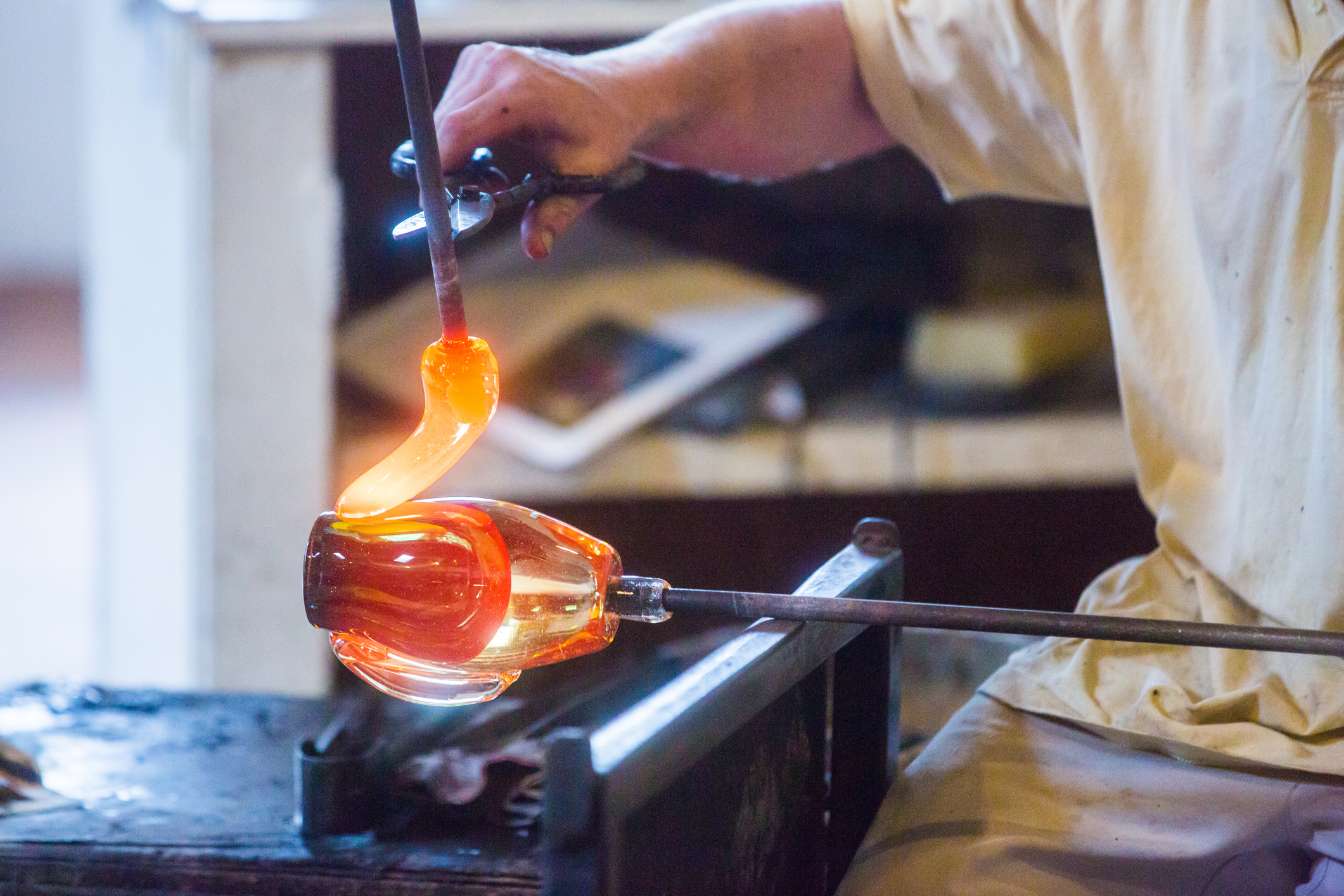This October, LET’S LEARN ABOUT…Glass!
What is glass?
Glass is one of the oldest man-made materials. People started making glass as early as 6000 years ago, when they first started living together in large cities. Hard, waterproof, and transparent, it can be made into useful things that were highly valued by many ancient cultures, such as perfume bottles, jewellery, and even mirrors.
How is glass made?
Glass is made from heated sand, which melts into a very thick liquid (called molten glass) and hardens again at room temperature. It can be carved, poured into moulds, or blown into various shapes using special tools. Different materials can be added to glass to achieve tinted or opaque colours, and it was often coloured to look like precious materials, such as jade and sapphire.

Shaping molten glass into a vase
Glass objects can also be melted down and repurposed, and recycling glass was common in even the earliest glass-using societies. Don’t forget to wash out your own glass bottles after use and put them in the recycling bin!
Let’s explore some of the many techniques used to make and decorate glass through objects in the ACM galleries.